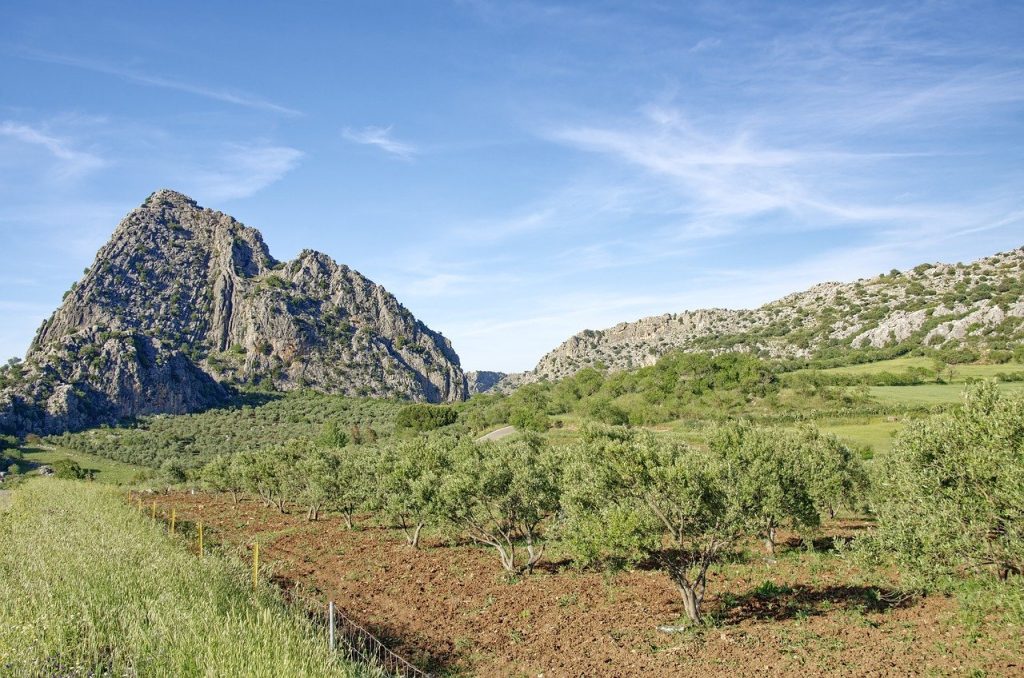Nestled in the heart of Spain's Valencian Community, between the provinces of Alicante and Valencia, the Sierra de Mariola Natural Park serves as a splendid showcase of the Mediterranean's natural beauty and biodiversity. Officially declared a Natural Park in 2002, this expansive area covers approximately 17,257 hectares, offering a sanctuary not only to diverse wildlife but also to a rich tapestry of flora, historical sites, and cultural traditions. This article delves into the park's geography, flora and fauna, historical significance, and recreational activities, highlighting why it's considered a jewel of Alicante.
Geography and Climate
The Sierra de Mariola rises majestically between the towns of Bocairent, Cocentaina, and Alcoi, forming part of the larger Prebaetic System. The park's highest peak, Montcabrer, stands at 1,390 meters, offering panoramic views of the surrounding lush landscapes and beyond. The geography of the park is characterized by a rugged terrain dotted with deep ravines, wide valleys, and a series of smaller peaks, which provide a varied and picturesque topography.
The climate of Sierra de Mariola is typically Mediterranean, marked by hot, dry summers and mild, wet winters. This climatic condition is pivotal in shaping the park's unique ecosystems and supports the growth of a rich variety of plants that are adapted to these weather patterns.
Flora and Fauna
The biodiversity of Sierra de Mariola is one of its most remarkable aspects. The park is renowned for its extensive forests of Aleppo pine, coupled with large areas of holm oak and oak. The underbrush is predominantly composed of Mediterranean shrubbery such as rosemary, thyme, and lavender, which not only contribute to the park's aromatic atmosphere but also play a crucial role in the local herbal industry.
The fauna of the park is equally impressive. It is a haven for many species of birds, including the golden eagle and Bonelli's eagle, which soar high above the park's rugged terrain. The dense forests and quieter areas provide perfect nesting grounds for these birds of prey. Mammals such as the Iberian wild goat, wild boars, and various species of bats also inhabit this area, making it a significant site for both ecological study and conservation.
Historical Significance
Sierra de Mariola holds a deep historical significance, evidenced by numerous archaeological sites scattered throughout the park. From ancient Iberian settlements to later medieval structures, the area serves as a living museum reflecting various periods of Spanish history. One of the most notable sites is the Cava de Sant Blai, a snow well used in ancient times to store snow and convert it into ice, which was then transported to the cities during warmer months.
Additionally, the park's natural resources have historically been harnessed for various purposes. The abundant presence of herbs and medicinal plants has supported a local tradition of herbalism. This botanical wealth has been used for centuries to produce traditional remedies and aromatic products, a practice that continues to this day with sustainable harvesting methods.
Recreational Activities
Sierra de Mariola is not only a hub for naturalists and historians but also a popular destination for outdoor enthusiasts. The park offers a wide range of recreational activities such as hiking, mountain biking, and horseback riding. The well-marked trails, such as the route to the summit of Montcabrer, provide opportunities for all to explore the natural beauty and panoramic views of the park.
For those interested in more leisurely pursuits, the park's picnic areas offer a perfect setting for family outings and relaxation amidst nature. Bird watching is another popular activity, with several designated spots equipped with hides for observing the park's avian residents.
Conservation Efforts
The management of Sierra de Mariola is focused on preserving its ecological integrity while promoting sustainable tourism and educational outreach. Various initiatives are in place to protect the park's wildlife and habitats, including strict regulations on land use and visitor activities. Environmental education programs are also a key component of the park's conservation strategy, aiming to raise awareness about the importance of biodiversity and ecosystem conservation.
Conclusion
Sierra de Mariola Natural Park is a significant natural asset for Alicante and Spain. Its rich tapestry of biodiversity, coupled with its historical and cultural significance, makes it a unique and valuable resource. For those seeking to immerse themselves in nature, explore history, or simply enjoy the great outdoors, Sierra de Mariola offers an unparalleled experience. As efforts continue to preserve this beautiful landscape, it remains a testament to the natural beauty and cultural heritage of Alicante.
Frequently Asked Questions (FAQs)
What is the highest peak in Sierra de Mariola Natural Park?
Montcabrer is the highest peak in Sierra de Mariola Natural Park, reaching an elevation of 1,390 meters
Can I participate in recreational activities in Sierra de Mariola?
Yes, the park offers a variety of recreational activities including hiking, mountain biking, horseback riding, and bird watching
Are there any historical sites within Sierra de Mariola Natural Park?
Yes, the park is home to numerous archaeological sites, including ancient Iberian settlements and medieval structures like the Cava de Sant Blai snow well
What types of wildlife can be found in the park?
The park hosts a range of wildlife including birds like the golden eagle, mammals such as the Iberian wild goat and wild boars, and various species of bats
How is Sierra de Mariola Natural Park helping in conservation?
The park employs strict land use regulations and visitor activities monitoring, alongside running educational programs to promote biodiversity and ecosystem conservation
